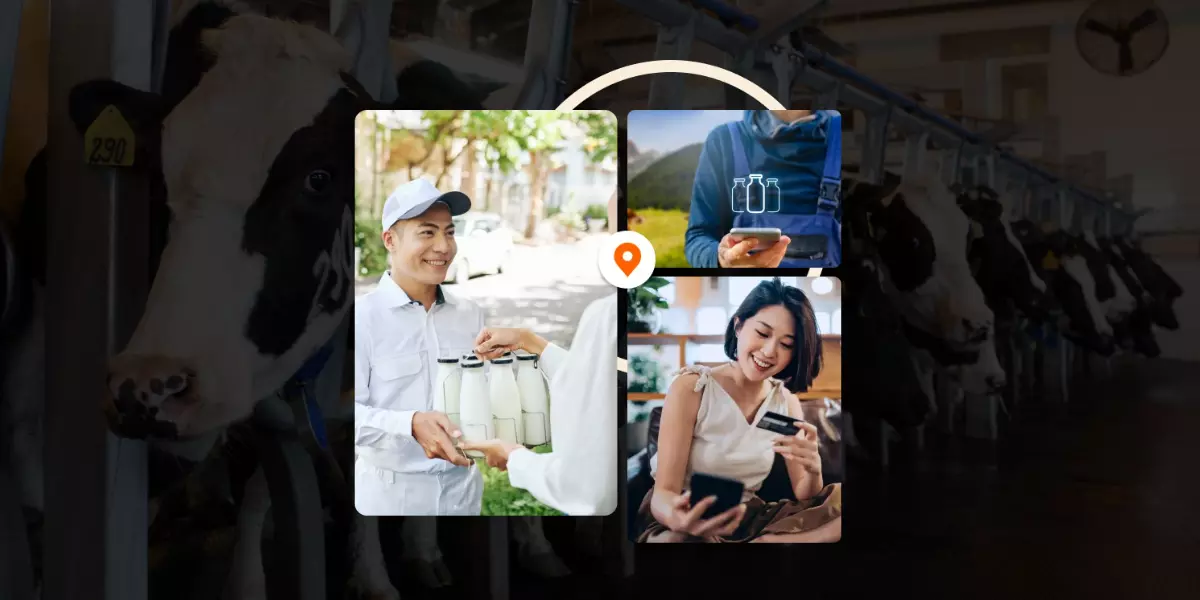
Milk Delivery App Development: Comprehensive Guide
In recent years, the convenience of doorstep delivery has permeated various aspects of our daily lives, from groceries to ready-to-eat meals. The dairy industry is no exception. A milk delivery app can revolutionize the way consumers access fresh milk and dairy products, offering them convenience while providing businesses with a new revenue stream. This comprehensive guide will walk you through the essential steps to develop a milk delivery app, covering everything from market research to launching your app successfully.
Understanding the Market Demand
Before diving into the development process, it’s crucial to understand the market demand for milk delivery services. Find out what your target audience likes and what their pain points are by conducting thorough market research. Analyze the competition to understand what they offer and identify gaps that your app can fill. Key factors to consider include:
- Consumer Preferences: What are the primary concerns of your potential customers? Are they looking for organic milk, specific dairy products, or perhaps subscription-based deliveries?
- Competitive Landscape: Who are your main competitors, and what are their strengths and weaknesses?
- Geographic Demand: Which areas have the highest demand for milk delivery services? Urban areas tend to have higher demand due to busier lifestyles.
Key Features of a Milk Delivery App
A successful milk delivery app must offer features that cater to both customers and business owners. Here are some essential features to include:
Customer App Features
- User Registration and Profile Management: Allow users to sign up and manage their profiles easily.
- Product Listings: Showcase various milk and dairy products with detailed descriptions and prices.
- Subscription Plans: Offer flexible subscription options, such as daily, weekly, or monthly deliveries.
- Order Tracking: Provide real-time tracking of orders from dispatch to delivery.
- Payment Gateway Integration: Ensure secure and multiple payment options, including credit/debit cards, digital wallets, and net banking.
- Notifications and Alerts: Send timely notifications about order status, new products, and special offers.
- Reviews and Ratings: Allow customers to rate and review products and delivery services.
Admin Panel Features
- Dashboard: Provide a comprehensive dashboard to manage orders, inventory, and deliveries.
- Customer Management: Access customer profiles and manage their orders and subscriptions.
- Product Management: Add, update, and remove products from the catalog.
- Order Management: Track and manage all orders, including delivery schedules and routes.
- Payment Management: Monitor all transactions and handle refunds and disputes.
- Analytics and Reports: Generate detailed reports on sales, customer behavior, and other key metrics.
Tech Stack for Milk Delivery App Development
Choosing the right technology stack is crucial for developing a robust and scalable milk delivery app. Here’s a recommended tech stack:
Front-End Development
- iOS: Swift
- Android: Kotlin
- Cross-Platform: React Native or Flutter
Back-End Development
- Server: Node.js or Django
- Database: MongoDB or PostgreSQL
- Cloud Services: AWS, Google Cloud, or Microsoft Azure
APIs and Integrations
- Payment Gateways: Stripe, PayPal, or Braintree
- Push Notifications: Firebase Cloud Messaging (FCM)
- Maps and Geolocation: Google Maps API
Also Read: Milk Round Software – Track your Delivery Drivers Efficiently
Steps to Develop a Milk Delivery App
1. Define Your Requirements
Start by defining the scope of your project. List all the features you want to include and prioritize them based on their importance. Create wireframes and mockups to visualize the user interface and user experience.
2. Choose a Development Method
You can either hire an in-house development team, outsource to a software development company, or use a combination of both. Each method has its pros and cons:
- In-House Team: Greater control over the development process but can be expensive.
- Outsourcing: Cost-effective and access to a broader talent pool but may involve communication challenges.
- Hybrid: Combines the benefits of both methods but requires good project management skills.
3. Develop the MVP
Start with a Minimum Viable Product (MVP) that includes only the core features. This approach allows you to test the app with real users and gather feedback for improvements. Ensure that the MVP is functional and provides a seamless user experience.
4. Test Rigorously
Make sure bugs and issues are identified and fixed during the testing process. Perform various types of testing, including:
- Unit Testing: Test individual components for functionality.
- Integration Testing: Ensure that different components work well together.
- User Acceptance Testing (UAT): Validate that the app meets user requirements and expectations.
5. Launch and Market Your App
Once you are satisfied with the testing results, prepare for the app launch. Submit your app to the respective app stores (Google Play and Apple App Store). Plan a marketing strategy to promote your app, which may include social media campaigns, influencer partnerships, and email marketing.
6. Gather Feedback and Iterate
After the launch, gather feedback from users and monitor app performance. Use analytics tools to track user behavior and identify areas for improvement. Regularly update the app to add new features, fix bugs, and enhance performance.
Read More: Milk Delivery App Development: How to Guide
Conclusion
Milk Delivery App Development can be a lucrative venture if done correctly. By understanding the market demand, incorporating essential features, and choosing the right tech stack, you can create an app that meets the needs of both customers and business owners. Remember to start with an MVP, test rigorously, and continuously iterate based on user feedback. With careful planning and execution, your milk delivery app can become an essential service in the lives of your customers.
Dairy businesses have the opportunity to grow and adapt in a digital world by investing in a milk delivery app, which simplifies the process for consumers as well as makes it easier for them to do business.